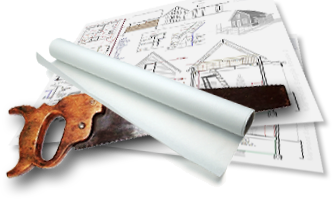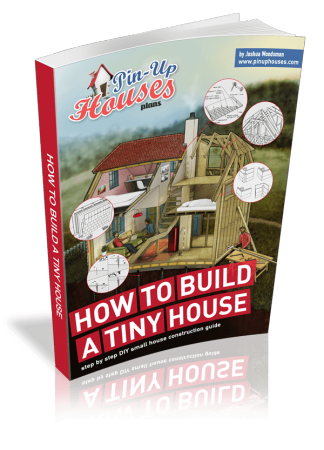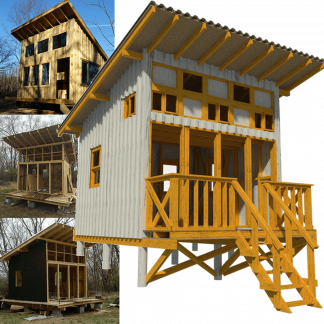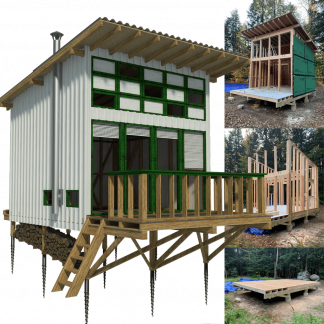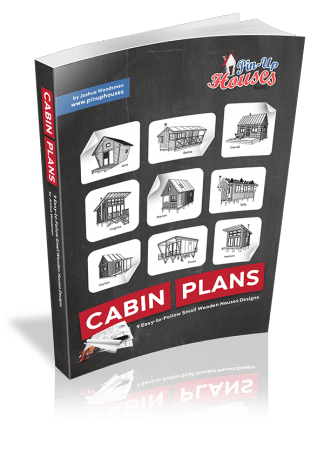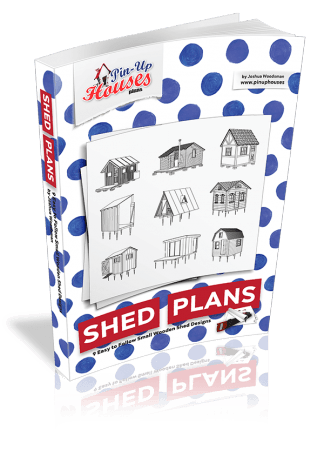Building your own house requires constant monitoring of every process, even if it’s about constructing a small cabin.
Quiet plots outside the city, gardens, and private terraces attract more and more people. Compact houses are ideal for those who value freedom, nature, and the ability to create a space tailored to their needs.
How can such a construction project be implemented profitably?
One thing is clear: it requires a detailed plan and the application of fundamental principles trusted by professionals.
The purpose of this article is to cover these fundamentals.
10 project management fundamentals for DIY cabin builders
If you are planning to build a small house or a tiny cabin according to the DIY (“do it yourself”) principle, you’ll definitely require a systematic approach.
Let’s dive into the key fundamental principles you should consider to transform your idea into a finished house without unnecessary stress or cost overruns.
1. Choosing an online project management tool
Detailed visual planning and continuous monitoring of task execution are essential for both complex projects and small initiatives.
Even if your goal is to build a small house or cabin, you can’t do it professionally without a competent construction or architecture planning tool.
Such a powerful PM tool may become a single system of construction management. It will help your team see the whole picture, from initiating procurement to performing decorative work.
In this case, Gantt chart-based programs like GanttPRO are especially effective. They display tasks as bars on a timeline. You can easily track dependencies between activities, potential critical paths, and deadlines there.
With this software, you can easily assign responsible performers, communicate with a team, attach documents, and track your budget in one place.
Learn more about software with a Gantt chart for architecture here.
2. Visual timeline preparation
With reliable project planning software, you can easily create a visual timeline that reflects all construction stages, from day one to completion.
It shouldn’t be a simple table or a small to-do list, but a real-time diagram showing the interrelationships of tasks and resources.
Set clear timeframes for equipment delivery, site preparation, wall construction, door installation, and other tasks. You can also break down larger activities into smaller parts.
A well-designed visual timeline will help you identify areas where delays can be avoided. It will minimize disruptions to the overall project.
3. Forming a realistic budget
Building a small house can be quite expensive. Therefore, you should devote sufficient attention to budgeting before starting construction.
Schedule contractors, materials, and equipment rentals. Prepare the necessary permits and try to forecast unexpected expenses.
Research market prices in your region. Don’t budget too tightly, without allowing for unexpected stuff.
Regularly compare your plan with the actual budget and adjust your spending if you notice any overspending early on.
4. Resource allocation and workload control
Even though you plan to build a house yourself, you still need additional help from outside specialists. Therefore, at the beginning of a project, it’s important to determine which tasks you’ll handle yourself, which you’ll outsource, and which you’ll need to perform with the help of others.
Create a realistic work schedule using your planning software. Assign tasks among the responsible individuals and explain their duties to each.
If several crews work on your construction site, pay special attention to coordination. A carpenter and an electrician shouldn’t be working in the same room at the same time, and a landscaper shouldn’t wait for a plumber to finish.
Remember to regularly discuss the progress of work with all project participants and adjust plans as necessary.
5. Milestone identification
Any project has key or most important tasks, even if it’s building a small DIY house.
Milestones assist in evaluating progress and understanding whether you’re on track or not. They usually have specific dates.
For example, such milestones may include logistics approval, erecting walls, installing utilities, installing a roof, and more. You can visualize and track them in your project management software.
When a milestone is reached, remember to celebrate and acknowledge this fact. It will accelerate team motivation and demonstrate progress.
6. Technical specification development
Even building a compact house or cabin requires paperwork and routine actions with technical documentation. The more details you provide at the initial stage, the fewer disputes will arise during the process.
Typical documents in this case describe a future house, including its total area, number of rooms, materials used, lighting and heating systems, and other details.
It’s also important to attach all necessary drawings, load calculations, and utility diagrams.
Even the smallest construction project must comply with building codes and local legislation. Otherwise, you may encounter problems registering the house.
7. Coordination of work with contractors
Control isn’t about mistrust, but about maintaining construction standards, where the strength of the entire building depends on the quality of each stage.
Pay special attention to selecting reliable contractors. Explore available reviews and consider recommendations from previous clients. If needed, ask uncomfortable questions, including those about work warranties.
Sign only formal contracts with clearly defined costs, deadlines, and project stages. Good contractors aren’t afraid of liability; they can document everything on paper.
8. Organization of logistics and delivery of materials
Logistics and delivery of all necessary materials, from small nails to huge iron structures, play a key role in any construction project.
When scheduling your work associated with your tiny house, consider all the necessary stuff and include it in the overall plan.
Break down the procurement process into stages. Compare prices and delivery terms from different suppliers. Agree on deadlines in advance and allow for additional time.
9. Risk assessment
If you want to prevent inconveniences and serious problems in your project, it’s important to assess potential risks in advance. This thoughtful approach is especially critical in construction, where unpleasant surprises can be inevitable.
Try to think through these potential problems. Create a risk list, taking into account rising material prices, documentation errors, bad weather, logistical disruptions, possible worker illness, etc.
Evaluate the possible consequences. It will help you understand what to prioritize. Regularly review the risk list throughout the construction process, as new threats can arise at each stage.
10. Developing a responsible approach to reporting
Monitoring progress and in-depth reporting allow you to see the real picture of a project, not just the one contractors want you to see. The sooner you notice a deviation from a plan, the faster you can correct it without serious consequences.
Establish a consistent frequency of inspections. Walk through a site daily and assess what’s been accomplished and what’s not. Organize meetings with all contractors and receive feedback.
Also, use the reporting functionality in your project management tool. Many systems automatically generate progress charts and detailed reports, including financial ones.
That’s it.
Organize the construction of a small house from A to Z
Your future small house or cabin doesn’t begin with the first brick, but with an initial task within a well-organized plan.
The process of DIY construction is a vital test of both the materials’ strength and your management skills.
The ten fundamentals we’ve discussed above are a well-coordinated system, proven by the experience of many builders. Following them will help you avoid common mistakes.
Consider them and select the right online tools to realize your dream. The result will exceed your expectations for sure.

